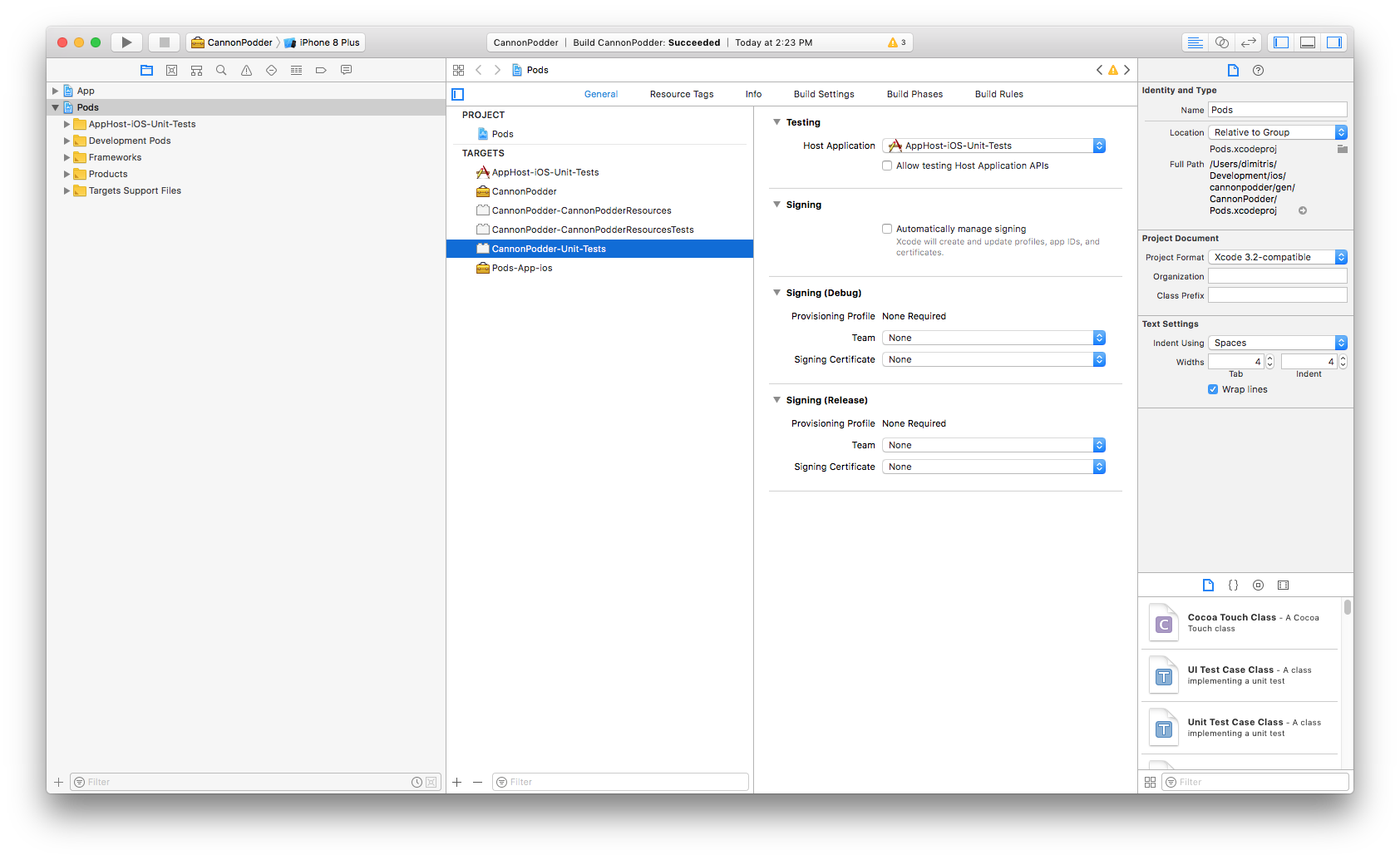

#IOS POD ADD CODE#
#IOS POD ADD INSTALL#
Running the command pod install will create a new Xcode workspace to manage your project. Your Podfile contents will lok like this one platform :ios, '12.0'Įnd Using Cocoa Pods Components in Xcode Open the Xcode project workspace G enerally, use the last available platform, unless the project or the component has some platform version restrictions:

Uncomment the platform definition or creating a new one. To avoid the warning message about the platform version, you may want to edit the Podfile. Please specify a platform for this target in your Podfile. Automatically assigning platform `ios` with version `12.0` on target `ios-googlemaps-app` because no platform was specified. Pod installation complete! There are 2 dependencies from the Podfile and 2 total pods installed. Then, you will receive a message of a successful installation of pods: Analyzing dependencies It could take a couple of minutes to complete.

This will retrieve a local reference of all Cocoa pods available. The first time you run pod install, the system will retrieve the master repository of Cocoa Pods. Then, you can install the pods defined in the PodFile using the command pod install. If you want to add some pod, like the Google Maps iOS SDK components, you can add it to the section target: target 'my-app-name' do # platform :ios, '9.0' target 'my-app-name' do # Comment the next line if you're not using Swift and don't want to use dynamic frameworks use_frameworks! After that, you will get a PodFile like this: # Uncomment the next line to define a global platform for your project Then, after you install Cocoa Pods, you can create the initial PodFile executing pod initinside the root folder of your application.
#IOS POD ADD HOW TO#
In this post I will show how to Install Cocoa Pods for Xcode projects.


 0 kommentar(er)
0 kommentar(er)
